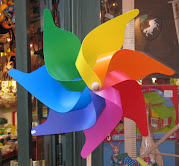
 Late last night going back to Nollendorfplatz with our friends Horst and Gaby they showed us two Stolpersteine in the pavement just outside an ordinary house in a side street.
Late last night going back to Nollendorfplatz with our friends Horst and Gaby they showed us two Stolpersteine in the pavement just outside an ordinary house in a side street.
I hadn't come across these small local memorials to people who were deported during the Nazi time. My research this morning tells me that these "stumbling blocks" - more than 1800 in Hamburg and 1600 in Berlin - have already become the world's most delocalised memorial. They were the idea of the artist Gunter Demnig and have spread outside Germany to Austria. The great part of the project is that it involves local people and schools in the research and also to raise money to make the blocks. It is about discovering the lost stories of local people who were forcibly removed. A real example of how the artistic imagination can encourage research, build community today with a sense of the past.
Here's an extract from wikipedia about the project:
Schools, relatives, and various organizations investigate facts about people, who were deported or persecuted during the regime of Nazi Germany.Once the investigation work has been done, Demnig manufactures a concrete cube of 10 cm/ 4 in, which he covers with a sheet of brass. Then he adds the writing “Hier wohnte” (Here lived), the name, year of birth and the fate: mostly the date of deportation and of death. The Stolperstein is then put down flush in the pavement/sidewalk in front of the last residence of the victim. The financial requirements are covered by donations, collections, individual citizens, contemporary witnesses, school classes, or communities. One Stolperstein costs €95.






1 Comment:
Thanks for telling us about this.
Hannah and I saw some in Wittenburg when we were there last year.
Post a Comment